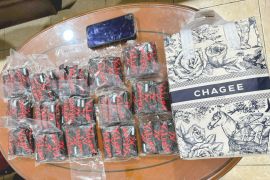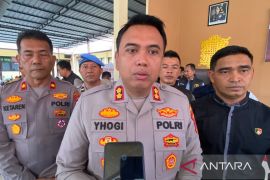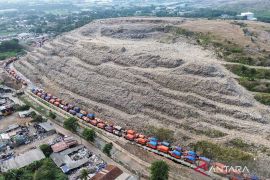BRIN archaeologist Retno Purwanti stated here on Thursday that the ancient brick structure was discovered through observations made by a team of archaeologists from all four sides of the excavation to make the foundation for the installation of billboard piles on Wednesday, behind the Ganesha Statue, at the Sultan Mahmud Badaruddin II Museum in Palembang.
The observation was made after a team of archaeologists earlier received a report from the Palembang Culture Service that had found fragments of presumably ancient bricks that were between 7-12 centimeters long, 6-7 centimeters wide, and four centimeters thick at that location.
"From that observation, there are two layers of bricks left in the northeast corner of the excavation. Among the brick fragments that are lifted there are three scratched bricks that may be from ancient symbols and letters," she stated.
She explained that the brick structure is believed to be part of the Tengkuruk Palace, also known as Kuto Batu or Kuto Kecik, which was founded during the era of the Palembang Darussalam Sultanate in 1737.
"The brick arrangement is probably a fence wall around the inside of the palace that separates the courtyards of the princes, princesses, and the sultan's house, as well as other parts," she said while referring to the 2014 findings of four layers of brickwork at a nearby location.
Related news: Taking a walk down history lane in Cikini
"Referring to the plan of the palace made by Major William Thorn in 1811, this brick structure is likely the location of the residence of the Prince Queen," she remarked.
In the meantime, the team of archaeologists still need to conduct further observations from various historical literacies to confirm these findings.
The BRIN Archaeologist team also found several foreign ceramic shards from China and Europe that are believed to have come from the Sung Dynasty during the 10th-12th century AD and the Qing Dynasty during the 18th-20th century AD. They will also examine the findings further.
Related news: Reviewing history of Banjarmasin through Sultan Suriansyah Mosque
Translator: Katriana
Editor: Rahmad Nasution
Copyright © ANTARA 2022












